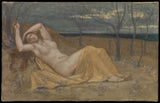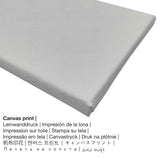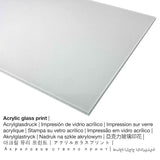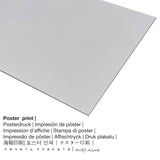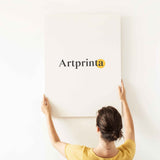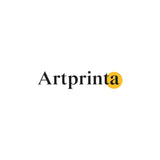Pierre Puvis de Chavannes, 1886 - Tamaris - mbipụta nka mara mma
Ụtụ gụnyere. Mbupu gbakọrọ na ndenye ọpụpụ.
Nchịkọta ngwaahịa nka
N'elu 130 afọ ọrụ nka e kere site Pierre Puvis de Chavannes na 1886. Nke mbụ tụrụ nha: 10 x 15 1/2 na (25,4 x 39,4 cm) ewe me ya ihe eji eme ihe mmanụ na kwaaji. N'oge a, artpiece bụ nke dijitalụ art collection nke Museumlọ ihe ngosi nka nke Obodo. Site n'ikike nke The Metropolitan Museum of Art, New York, H. O. Havemeyer Collection, Gift of Mrs. J. Watson Webb, 1930 (nwere ikike: ngalaba ọha). In addition, the artpiece has the creditline: H. O. Havemeyer Collection, Gift of Mrs. J. Watson Webb, 1930. Further, the alignment of the digital reproduction is landscape with a ratio of 3: 2, nke pụtara na ogologo bụ 50% ogologo karịa obosara. The painter Pierre Puvis de Chavannes was an artist from France, whose art style can mainly be classified as Symbolism. The Symbolist artist lived for 74 years, born in the year 1824 na Lyon, Auvergne-Rhone-Alpes, France wee nwụọ na 1898 na Paris, Ile-de-France, France.
Họrọ ngwa ngwaahịa ọkacha mmasị gị
Na menu ndọpụta ngwaahịa ị nwere ike họrọ ihe na nha ọkacha mmasị gị. Nha na ihe ndị a bụ nhọrọ anyị na-enye gị maka nkeonwe:
- Aluminom ihe eji eme ihe: An Aluminium Dibond print is a material with an impressive depth effect, which makes a fashionable look with a surface structure, which is non-reflective. For the Aluminium Dibond print, we print your favorite artwork on the aluminium surface. The bright and white parts of the artwork shimmer with a silk gloss but without glow. This direct UV print on Aluminum Dibond is one of the most demanded entry-level products and is an extremely sophisticated way to showcase art prints, as it puts all of the viewer’s focus on the replica of the artwork.
- Akwụkwọ mmado ebipụtara (ihe kwaaji): The Artprinta poster is a printed canvas with a slightly rough surface texture. Please bear in mind, that depending on the size of the canvas poster print we add a white margin 2-6 cm round about the artwork to facilitate the framing.
- Kwaaji: The printed canvas applied on a wood frame. Your canvas of your favorite masterpiece will let you turn your personal fine art print into a large artwork as you would see in a gallery. Canvas prints are relatively low in weight, meaning that it is easy to hang your Canvas print without the use of extra wall-mounts. Canvas prints are suitable for any kind of wall.
- Bipụta na iko acrylic na-egbuke egbuke (nke nwere ezigbo mkpuchi iko): An acrylic glass print, which is sometimes denoted as a print on plexiglass, changes the artwork into magnificient décor. Besides, it makes a good alternative to canvas and aluminidum dibond prints. Your favorite work of art will be made with state-of-the-art UV printing machines. The great benefit of a plexiglass print is that contrasts plus smaller color details will be recognizeable because of the very subtle tonal gradation in the print. Our acrylic glass protects your chosen fine art print against light and external influences for decades.
Ihe dị mkpa: We try the best we can in order to describe our products as clearly as possible and to demonstrate them visually in our shop. Nevertheless, the tone of the print materials and the print result can diverge somehwat from the representation on the monitor. Depending on your settings of your screen and the nature of the surface, color pigments can unfortunately not be printed 100% realistically. Because our are printed and processed manually, there might also be slight variations in the motif's exact position and the size.
Banyere ngwaahịa a
| Ụdị edemede: | mmepụta nka |
| Mmeputakwa: | mmeputakwa n'ụdị dijitalụ |
| Production usoro: | mbipụta dijitalụ (Mbipụta UV ozugbo) |
| Ihe ngosi: | Germany |
| Stockdị ngwaahịa: | a na-achọ |
| A na-atụ aro iji ngwaahịa eme ihe: | nka mgbidi, ụlọ ihe osise nka |
| Nhazi nka nka: | usoro odida obodo |
| Oke akụkụ onyonyo: | 3: 2 ogologo ruo obosara |
| Ntụgharị nkọwa akụkụ: | ogologo bụ 50% ogologo karịa obosara |
| Akwa mmeputakwa dị: | mbipụta akwụkwọ mmado (akwụkwọ kwaaji), mbipụta kanvas, mbipụta enyo acrylic (nwere ezigbo mkpuchi iko), mbipụta ọla (aluminium dibbond) |
| Nhọrọ nha nke akwa akwa n'elu etiti ihe na-agbatị (mbipụta kwaaji): | 30x20cm - 12x8", 60x40cm - 24x16", 90x60cm - 35x24", 120x80cm - 47x31", 150x100cm - 59x39" |
| Mbipụta iko acrylic (nwere ezigbo mkpuchi iko) dị iche iche: | 30x20cm - 12x8", 60x40cm - 24x16", 90x60cm - 35x24", 120x80cm - 47x31" |
| Mpempe akwụkwọ mmado (akwụkwọ kwaaji) nha dị iche iche: | 60x40cm - 24x16", 90x60cm - 35x24", 120x80cm - 47x31" |
| Mpempe akwụkwọ Dibony (ihe alumnium) nha dị iche iche: | 30x20cm - 12x8", 60x40cm - 24x16", 90x60cm - 35x24", 120x80cm - 47x31" |
| Igwe onyonyo: | biko buru n'uche na nnomi nka enweghi fremu |
Ọrụ tebụl nka
| Aha nka nka: | "Tamaris" |
| Nhazi nka nka: | sere |
| Okwu mkpokọta: | nkà nke oge a |
| Narị afọ nka: | 19th narị afọ |
| Afọ nka: | 1886 |
| Afọ nka: | ihe karịrị 130 afọ |
| Ọkara nke ihe osise izizi: | mmanụ na kwaaji |
| Nha ihe osise izizi: | 10 x 15 1/2 na (25,4 x 39,4 cm) |
| Ụlọ ihe ngosi nka: | Museumlọ ihe ngosi nka nke Obodo |
| Ebe ngosi nka: | New York City, New York, Njikota Obodo Amerika |
| Dị n'okpuru: | www.metmuseum.org |
| Ụdị ikike nka: | ngalaba ọha |
| Site n'aka: | The Metropolitan Museum of Art, New York, H. O. Havemeyer Collection, Gift of Mrs. J. Watson Webb, 1930 |
| Ebe kredit nke ọrụ nka: | H. O. Havemeyer Collection, Gift of Mrs. J. Watson Webb, 1930 |
Tebụl nyocha nke onye na-ese ihe
| Aha onye nka: | Pierre Puvis de Chavannes |
| Aliases: | Pierre Puvis de Chavannes, Pierre-Cécile Puvis de Chavannes, da Chavannes Pierre Puvis, Puvis de Chavannes Pierre Cecile, Puvis de Chavannes, De Chavannes Pierre Puvis, pierre cecile puvis de chavannes, פובי דה שאבאן פייר אנרי, Pʻu-wei Te Hsia-fan-na, Puvis de Chavannes Pierre-Cecile, Puvis de Chavannes P., Chavannes Puvis de, Pierre Henri Puvis de Chavanne, Chavannes Pierre Puvis de, p. de chavannes, chavannes de P., Puvis de Chavanne Pierre Henri, Puvis de Chavannes Pierre |
| okike nke onye nka: | nwoke |
| Obodo onye nka: | French |
| Ọrụ nke onye na-ese ihe: | onye na-ese ihe |
| Mba onye si: | France |
| Otu nka: | omenkà nke oge a |
| styles: | Akara |
| Afọ ọnwụ: | 74 afọ |
| Amụrụ n'afọ: | 1824 |
| Ebe amụrụ onye: | Lyon, Auvergne-Rhone-Alpes, France |
| Afọ ọnwụ: | 1898 |
| Nwụrụ na (ebe): | Paris, Ile-de-France, France |
Edochiri ederede a site na nwebiisinka © | Artprinta (www.artprinta.com)
What does the The Metropolitan Museum of Art write about the 19th century artwork painted by Pierre Puvis de Chavannes? (© - nke Ụlọ ihe ngosi nka nke Obodo ukwu - Museumlọ ihe ngosi nka nke Obodo)
Although Puvis’s compositions are typically serene and restrained, this female nude has an unusual air of sensual abandon. Her voluptuous pose was likely inspired by an ancient Greek sculpture of the mythological heroine Ariadne. Puvis’s dealer exhibited this painting in 1887 with the title Tamaris, the French word for the tamarisk plant. Pink-blossoming shrubs around the woman reinforce her identity as a personification of the tamarisk, which is common to France’s southern coast.

